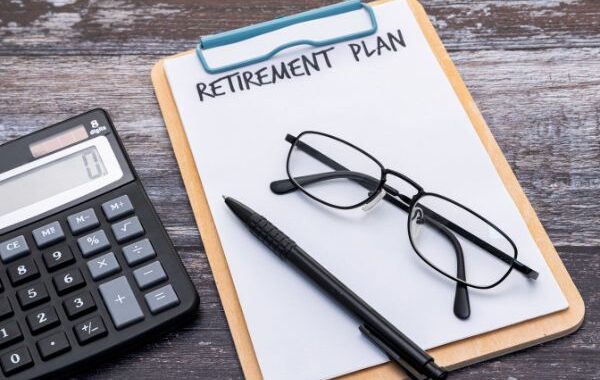After years of diligent saving, many retirees may be unsettled by the notion of actually tapping their portfolios. When should you start? How much is too much? What if you outlive your money? These are legitimate concerns, but by focusing solely on drawdowns, you could be overlooking other risks to the longevity of your savings.
Let’s take a look at three common mistakes that can negatively impact your retirement income—and what to do about each.
1. Selling assets in a downturn
If your first few years of retirement coincide with a market decline, it may seem that you’d need to sell more of your assets to meet your retirement income goal—leaving you with fewer shares and limiting your portfolio’s ability to recover during a potential market rally. If the decline is particularly steep or lasts for an extended period, it’s even harder to bounce back.
If a similar decline occurs later in your retirement, on the other hand, you may not need your portfolio to last as long or continue growing to fund a long retirement, so you may be in much better shape to fund withdrawals.
Timing is everything
This chart looks at how two retirees with identical portfolios and annual withdrawals could see very different results depending on when a market downturn occurred.

Source: Schwab Center for Financial Research
This chart is hypothetical and for illustrative purposes only.
Both hypothetical investors had a starting balance of $1 million, took an initial withdrawal of $50,000, and increased withdrawals 2% annually to account for inflation. Investor 1’s portfolio assumes a negative 15% return for the first two years and a 6% return for years 3–19. Investor 2’s portfolio assumes a 6% return for the first eight years, a –15% return for years 9 and 10, and a 6% return for years 11–20.1
So, what’s an investor to do? I suggest two courses of action:
- Adjust your allocation: Consider moving a portion of your assets into investments that are more likely to weather market disruptions. We suggest that retirees keep a portion of their retirement portfolio in cash or cash alternatives to help fund expenses. Then, consider allocating some to less-volatile investments, such as high-quality short-term bonds or short-term bond funds. This can help reduce the risk in a downturn and can be especially important early in retirement.
- Stay flexible: Regardless of when a downturn occurs, it’s important to remain flexible with your spending plan. If you’re able to reduce your spending and/or delay large purchases, your portfolio will tend to have a better chance of enduring a decline.
2. Collecting Social Security too early
It’s the age-old question: When should I start collecting Social Security? Many Americans opt to collect as soon as they become eligible at 62, but taking benefits before you reach full retirement age (from 66 to 67, depending on your birth year) means settling for smaller payments—for life.
If you are in good health, have a spouse, and are able to wait even a few years longer, you stand to receive a much larger monthly check—as the table below shows.
Delayed gratification
Individuals who collect Social Security beginning at age 62 receive 30% less in monthly benefits than if they had waited until full retirement age (FRA)—and roughly 56% less than if they had waited until age 70.

Source: Social Security Administration
Benefits are based on FRA for individuals born after 1954 and assume no inflation increases. For illustrative purposes only.
Waiting to collect can also help extend the life of your portfolio. True, you’ll have to rely on your savings alone if you retire several years before you start collecting Social Security, but the increased income that comes with deferral—which is guaranteed for as long as you live—can help preserve your portfolio later.
Furthermore, unlike most other retirement income sources, your Social Security benefit is adjusted upward in response to inflation—so larger cost-of-living adjustments mean bigger checks. Of course, delaying benefits is feasible only if you don’t require the funds right away, so discuss your income needs and longevity expectations with a financial planner to bridge the gap if your paycheck stops before Social Security starts.
3. Creating an inefficient distribution strategy
When it’s time to turn your retirement savings into income, it might not be as simple as selling investments and pocketing the proceeds. Rather, using your assets to support you in retirement should take into account not only your income needs but also timing, taxes, life expectancy, and account types—particularly the way withdrawals from different types of accounts or securities are taxed.
Keep a close eye on taxes and timing—especially once you reach age 72 (70½ if you turned 70½ in 2019 or earlier). That’s when the IRS obliges you to take the required minimum distributions (RMDs) from your 401(k)s and SEP, SIMPLE, and traditional Individual Retirement Accounts (IRAs).
For example, if RMDs push up your taxable income, you could end up paying more on your regular income and Social Security benefits as well as possibly owing taxes on the long-term capital gains and qualified dividends in your nonretirement accounts.
This is where a retirement income plan and tax-efficient distribution strategy can help. For example, some retirees might choose to take withdrawals from tax-deferred accounts like traditional IRAs prior to age 72—when they have more flexibility to decide how and when to take distributions—in order to help manage the size of the balance held in retirement accounts and, in turn, the amount of tax on RMDs in the future.
Keep in mind that withdrawals from tax-deferred accounts prior to age 59½ may be subject to an additional 10% penalty, so it’s usually best to try to avoid withdrawals prior to that age.
Other retirees may opt to convert some of their retirement assets into Roth IRAs,2 which are not subject to annual RMD requirements.
It’s helpful to remember, you can’t control markets and how they perform. But retirees do have more control over fees, taxes, and the timing of withdrawals. Whatever you decide, make sure to work with a financial planner and tax advisor to think through the details of your distribution plan.
1Does not reflect expenses, fees, or taxes.
2A Roth IRA conversion results in taxation of any untaxed amounts in the traditional IRA and may require a 5-year holding period before earnings can be withdrawn tax-free; subsequent conversions will be subject to an early-withdrawal penalty and will require their own 5-year holding period if under age 59½.

